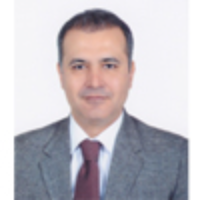Neurobiology of Common Sleep Disorders
Published on: 14th August, 2018
OCLC Number/Unique Identifier: 7844539109
Sleep disorders in human are common and detrimental to general health of all age groups. While the neurobiological mechanisms of sleep disorders are not yet fully understood, recent advances in research on the sleep-wake regulation mechanism, genetic and epigenetic factors, cognitive, emotional and physiological changes related to sleep have shed light on the mechanistic basis of sleep disorders. Over the past two decades, studies in Drosophila have yielded new insights into basic questions regarding sleep function and regulation. More recently, powerful genetic approaches in the fly have been applied toward studying primary human sleep disorders and other disorders associated with dysregulated sleep. In this review, we discussed recent advances in neurobiology of sleep-wave cycle and common sleep disorders. Understanding these mechanisms are important in the diagnosis, treatment and prevention of these common disorders.
The evolving landscape of ENT disorder treatments: Recent advances and innovations (2019-2021) – A Commentary
Published on: 17th November, 2021
The field of Otolaryngology-Head and Neck Surgery (ENT) has seen tremendous progress in the development of advanced treatments for various ENT disorders in recent years. This progress has been driven by advances in technology and research, which have led to the development of new and improved surgical techniques, medications, and devices. As a result, patients with ENT disorders now have more treatment options than ever before, and the quality of care that they receive has improved significantly.
Medical Examinations of Children and Adolescents to Fulfill the Sports Standards of the “Ready for Labor and Defense” Complex
Published on: 21st August, 2023
Introduction: The organization of medical support for the implementation of the standards of the All-Russian physical culture and sports complex “Ready for Labor and Defense” (“RLD”) in children’s clinics on the territory of the Republic of Komi (RK) is carried out in order to develop a physical culture among the population.Patients and methods: The analysis of the results of 2652 medical examinations of children and adolescents to comply with the standards of the “RLD” in the State budgetary healthcare institution of the Republic of Komi “Syktyvkar Children’s Clinic No. 3” (“SChCl No. 3”) in 2016-2022 was carried out. The significance of differences in quantitative characteristics between groups with a normal distribution of quantitative variables was calculated using Student’s t-tests for independent samples. The threshold value of the probability of error for statistically significant differences was set at a level equal to 0.05. The frequency ratio was calculated per 10,000-child population. The depth of the study was 7 years.Results: Among patients who applied for examination only 2604 people (98.85 ± 0.21%) were allowed to pass sports standards. The FC of those who applied was 138.44 per 10,000 children, and the FC of those admitted was 135.94. The proportion of patients of “SChCl No. 3”, who were assigned the main medical group for physical education ranged over the years from 87.37 ± 1.47% in 2017 to 98.86 ± 0.34% in 2019 and on average for 7 years amounted to 94.19 ± 0.45%. That is, almost 90% of those examined are children without health and physical development disorders, but with possible functional disorders that do not lag behind their peers in physical development and physical fitness. They are allowed to study in full according to the curriculum of physical education using preventive technologies, preparation, and passing tests of individual physical fitness.Conclusion: The average annual quantitative indicator of those who applied for certification to pass the standards of the “RLD” is a statistical tool, on the one hand, to determine the current and future workload of medical personnel and determine the forces and means of medical support, on the other hand, an indirect indicator of the interest of children and adolescents in systematic physical education and sports, instilling in schoolchildren the skills of a healthy lifestyle and the prospects for the physical development of the nation. The frequency of examinations per 10,000 of the child population should be considered as an indirect marker for assessing the physical development of children and adolescents since it is not the result of a continuous, but only selective (at the request of those who applied) research. The voluntary surrender of the “RLD” standards by children and adolescents should be approached as an indicator of physical readiness and high personal self-esteem, including psychological readiness for competitive relations in the school and adolescent environment and psychological maturity.
Relationship between Vitamin D Deficiency and Lipopolysaccharides Porphyromonas gingivalis Bacteria in Stunting Children
Published on: 24th December, 2024
Background: Stunting is a condition of growth and development disorders in children under 5 years of age who appear shorter than their age caused by nutritional deficiencies. The stunted growth and development of children can be influenced by deficiencies in the intake of macronutrients such as protein and micronutrients such as calcium, phosphorus, zinc, and vitamin D. One nutrient that is relevant to current dental health research is vitamin D. Objective: This review article will further analyze the relationship between vitamin D deficiency and Porphyromonas gingivalis bacterial lipopolysaccharide in stunting children. Literature review: Vitamin D deficiency can cause various problems related to the oral cavity such as a decrease in salivary flow rate, buffer capacity, and salivary content such as protein. A decrease in salivary flow rate causes secretory Immunoglobulin A (IgA) to decrease, thus disrupting the colonization of normal microflora in the oral cavity. Reduced vitamin D levels can potentially increase the number of Porpyhromonas gingivalis bacteria and also lipopolysaccharides (LPS), thus inhibiting the proliferation and differentiation of alveolar bone cells. Conclusion: Therefore, lack of micronutrient intake such as vitamin D deficiency can trigger the growth of Porphyromonas gingivalis bacteria and an increase in bacterial products such as lipopolysaccharides, especially in stunted children.




